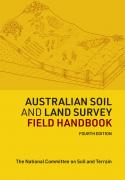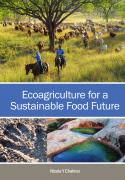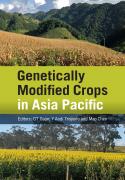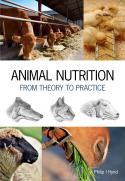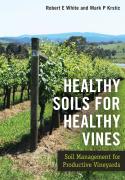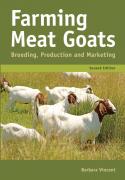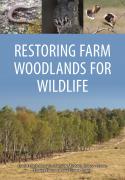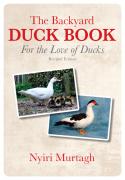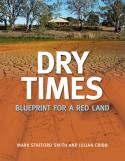This book explores the extent to which conservation and development goals in Australia's southern temperate forests can be reconciled. It examines the impacts of wood harvesting, roads, exotic species and other disturbance factors on forest species, communities, habitats and ecosystems.
- Page 10Abstract
The ecological impacts on eucalypt forest biodiversity resulting from integrated forestry harvesting in eastern Australia are discussed. Forest allocation and management options for mitigating these impacts are outlined. Logging and associated activities, such as roading and. the use of prescribed fire have significant impacts on biodiversity in many ways at various spatial and temporal scales. Impacts may be positive, negative or indeterminate in the way they change the distribution, abundance and likelihood of persistence of species, assemblages of species and other components of forest biodiversity. Many impacts are significantly detrimental since they can (i) destroy and modify complex forest landscapes and ecosystems; (ii) destroy and modify the natural environmental heterogeneity of forest ecosystems; (iii) destroy, prevent or hinder ecological processes that are the basis for species’ persistence and evolution; (iv) destroy or significantly modify the habitat of species; and (v) destroy individual organisms and significantly modify populations and assemblages of species. As a result of these changes, considerable genetic diversity is lost and the likelihood of the extinction of species may be increased. The detrimental impacts resulting from integrated forestry harvesting threaten many aspects of biodiversity including: various biological and ecological processes, genetic diversity, vertebrate and invertebrate fauna, rare and endangered species and assemblages, riparian environments and aquatic systems, and landscape diversity. Many impacts may be irreversible or effectively irreversible given the legacies of past forest-use, cumulative and synergistic effects, and the incompatibility between the natural rates of turnover of species compared to the current time horizons of intensive forestry operations. As a consequence, integrated forestry harvesting as currently conducted is not ecologically sustainable. Old-growth forest ecosystems on fertile soils are endangered.
The new National Forest Policy offers a framework for a move towards ecologically sustainable forestly. It outlines an approach based on a dedicated system of reserves that are to be representative, comprehensive and adequate, and complemented by improved off-reserve management. The protection of unresetved forest ecosystems with known or likely conservation value appears essential as they will provide the major options for reservation in at least the short-medium term. Significant reductions in logging quotas and major changes to current codes of forest practice are required if stated biodiversity conservation goals are to be achieved. We propose that future forestry prescriptions be based on guiding ecological principles and that future management set explicit operational goals for biodiversity conservation that can be tested (falsified). More resources will need to be dedicated to ecological monitoring within native forests. Without this commitment, it will be difficult to build on successes and learn from mistakes.
- Page 31Abstract
A synthesis is presented of the key findings of an array of studies of forest-dependent mammals inhabiting the montane ash forests of the Central Highlands of Victoria, southeastern Australia. These investigations have been completed at a range of spatial scales including the: (1) individual nest tree scale, (2) microhabitat or vegetation patch scale, (3) site scale, ( 4) landscape scale, and, (5) bioclimatic level. Data from these investigations have also been used in Population Viability Analysis (PVA) to simulate the long-term metapopulation dynamics of populations of arboreal marsupials.
The results of the various studies completed to date indicate that the present management regimes used in the Central Highlands of Victoria in which stands of montane ash forest are clearfelled on a 50–120 year rotation, will have a highly detrimental impact on populations of arboreal marsupials. Such activities may threaten the long-term persistence of several species of arboreal marsupials within wood production ash forests. Because of the effects of present logging practices on the long-term conservation of biodiversity, there may be conflicts between some of the overarching objectives of State and Federal initiatives that are designed to achieve ecologically sustainable resource use. A range of strategies will be required to overcome such potential problems. These include: (1) the application of revised silvicultural practices, (2) the development of larger and better connected areas of retained habitat within wood production forests, and, (3) an expanded National Park system to protect montane ash forests that are poorly represented in the present network of nature reserves. The implementation of these strategies will necessarily involve a reduction in timber yield and pulpwood production, and, in turn, a restructure of the timber industry in the region. However, the development of ecologically sustainable forest use in the montane ash forests of the Central Highlands of Victoria may be impeded by a number of factors. These include: (1) excessive on-going State Government commitments to timber resource agreements, (2) inconsistencies within and between the major objectives of present State Government natural resource policies, and, (3) problems in the on-ground implementation of such policies (e.g. breaches of environmental prescriptions for logging operations).
- Page 51Abstract
The feral cat Felis catus, fox Vulpes vulpes and dingo Canis familiaris dingo (including wild dogs) are significant predators in Australia that interact with native fauna in various ways including through predation, competition for resources, and the transmission of disease. In this contribution I consider how human-induced habitat fragmentation and disturbance may influence the use of native forest ecosystems by these exotic predators, and the significance of this for native forest fauna. Information on the distribution and abundance of the fox, cat and the dingo in these ecosystems, their ecology and their impact on native fauna is limited but is required to develop viable management strategies consistent with the principles of ecologically sustainable development. Although many temperate native forests are used for intensive wood production and are becoming highly fragmented and roaded, there are few published studies that specifically investigate the use of forest roads by exotic predators. One immediate research priority is to establish the relative impact that exotic predators may have on native fauna given various degrees of forest fragmentation and different management regimes. In particular, such research should investigate the extent to which roading and prescribed burning within native forests influence the use of areas by these predators.
- Page 59Abstract
Many old-growth forests are characterised by an abundance of hollow-bearing trees. Hollows represent an important habitat resource to a wealth of fauna. In Australia alone, the number of vertebrate species that utilise hollows has been suggested to be near 400. Taxa known to occupy southern temperate eucalypt forests are listed.
Timber harvesting in natural forests represents a potential threat to hollow-dependent fauna. A number of studies have demonstrated that populations of hollow-dependent species are reduced or eliminated upon the removal of all or a portion of the hollow resource. Logging cycles or rotation lengths are also typically shorter than the period required for trees to form hollows suitable for occupation by wildlife.
Since the management of Australia’s native forests is guided by the principles of multiple-use and ecologically sustainable development, prescriptions have been introduced in an attempt to minimise the impacts of timber harvesting on hollow-dependent fauna. Current prescriptions are suggested in this chapter to be sub-optimal for a number of reasons. It is recommended that ‘prescriptions’ be formulated for a specific site and its suite of fauna rather than across broad areas. Goals need to be formulated against which the performance of habitat tree prescriptions can be routinely monitored. In the absence of sufficient resource data, a more precautionary approach to management is warranted. Greater emphasis needs to be given in management strategies to the optimal distribution and perpetual recruitment of hollow-bearing trees. A number of changes to current silvicultural practice are suggested.
- Page 85Abstract
Certain forest fauna are vulnerable to habitat modification, fragmentation and loss brought about by logging, burning and grazing activities. Current forest reserve systems appear inadequate to provide for the long-term conservation of these species. Forests logged, burnt and grazed outside the formal reserve system are done so under generalised and inadequate mitigation procedures. There is an urgent need for forest wildlife habitat management guidelines and prescriptions based on ecological principles and existing knowledge of forest systems. Regional Systems of Retained Habitat are recommended as a sound framework for rational long-term management of forest wildlife habitats.
- Page 117Abstract
This chapter tackles the question of how scientists might play a more effective role in helping to find a path to a sustainable lifestyle. I contrast the strengths and weaknesses of two major policy formulation processes that have occurred in Australia recently. The Ecologically Sustainable Development Working Groups were round-table meetings of stakeholders in particular issues relating to sustainable development. The goal was to prepare a report and quickly reach consensus on a series of recommendations. In contrast, in the Resources Assessment Commission, three Commissioners conducted inquiries to evaluate options in particular resource issues. These inquiries ran for several years and had the support to carry out much more background research and data gathering. Neither system is ideal. Scientists will have to work within a wider peer group which includes economists and social scientists if they are to have a significant input into policy formulation. It is also essential that scientists become more effective in providing their advice in terms that are understood and heard by the general public. This will require well planned efforts to combat media campaigns by other vested interests.




